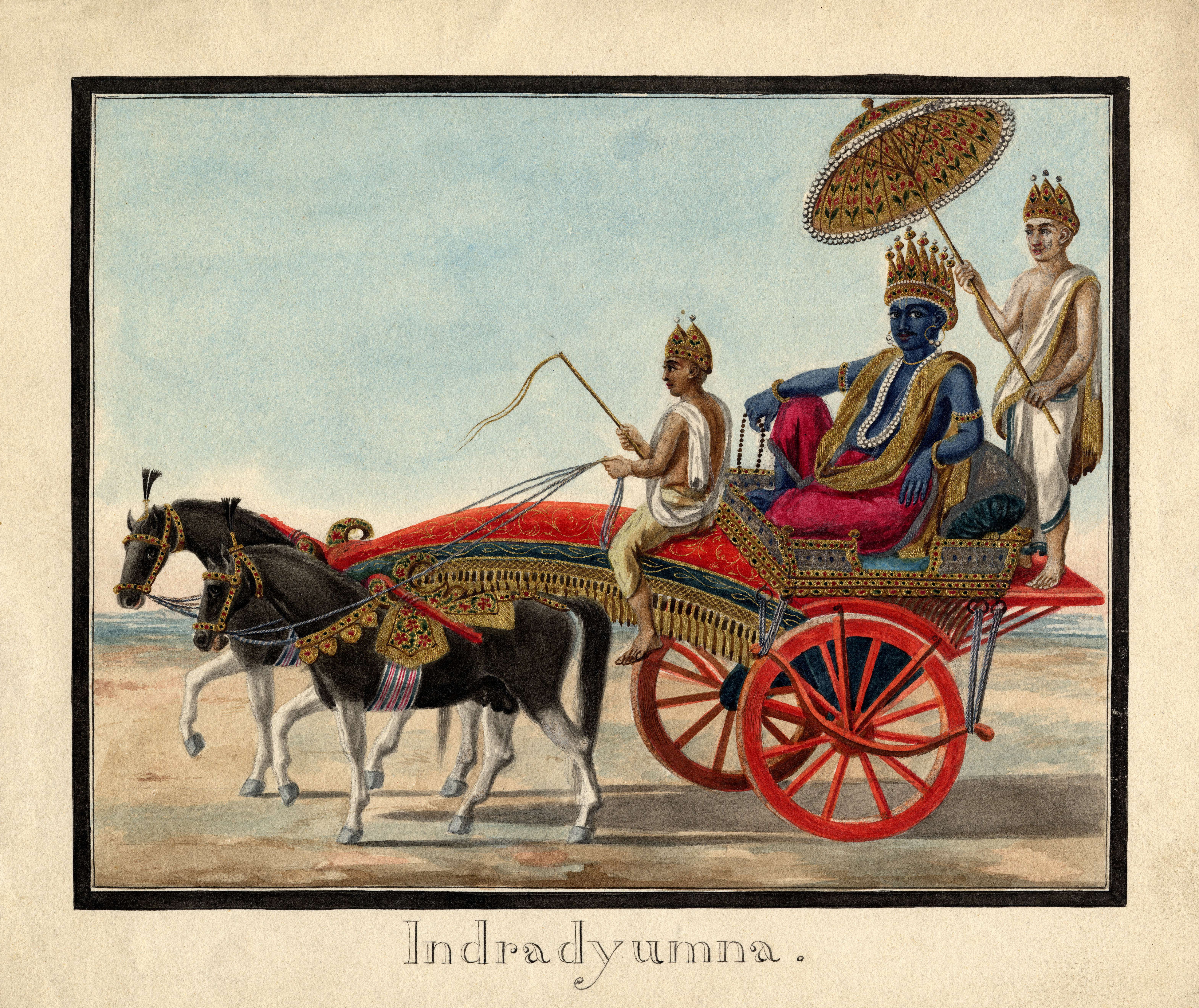|
Chaitanya Bhagavata
Śrī Caitanya-bhāgavata () is a hagiography of Caitanya Mahāprabhu written by Vrindavana Dasa Thakura (1507–1589 CE). It was the first full-length work regarding Chaitanya Mahaprabhu written in Bengali language and documents his early life and role as the founder of the Gaudiya Vaishnava tradition. The text details Chaitanya's theological position as a combined Avatar of both Radha and Krishna within the belief of his close associates and followers. The writing of Chaitanya Bhagavata was commissioned by Nityananda, who was the guru of Vrindavana Dasa Thakura and close friend of Chaitanya Mahaprabhu. Name Initially, the Chaitanya Bhagavata was named ''Chaitanya Mangala''. Krishnadasa Kaviraja also mentioned this work by this name. According to the ''Premavilasa'' of Narottama Dasa, when it was discovered that the poet Lochana Dasa had also written a work with this title, the leading members of the Vaishnava community in Vrindavan met and decided that Vrindavana Dasa's ... [...More Info...] [...Related Items...] OR: [Wikipedia] [Google] [Baidu] |
Hagiography
A hagiography (; ) is a biography of a saint or an ecclesiastical leader, as well as, by extension, an adulatory and idealized biography of a preacher, priest, founder, saint, monk, nun or icon in any of the world's religions. Early Christian hagiographies might consist of a biography or ' (from Latin ''vita'', life, which begins the title of most medieval biographies), a description of the saint's deeds or miracles, an account of the saint's martyrdom (called a ), or be a combination of these. Christian hagiographies focus on the lives, and notably the miracles, ascribed to men and women canonized by the Roman Catholic church, the Eastern Orthodox Church, the Oriental Orthodox churches, and the Church of the East. Other religious traditions such as Buddhism, Hinduism, Taoism, Islam, Sikhism and Jainism also create and maintain hagiographical texts (such as the Sikh Janamsakhis) concerning saints, gurus and other individuals believed to be imbued with sacred power. However ... [...More Info...] [...Related Items...] OR: [Wikipedia] [Google] [Baidu] |
Gaya, India
Gaya (International Alphabet of Sanskrit Transliteration, IAST: ) is a city, municipal corporation and the administrative headquarters of Gaya district and Magadh division of the Indian state of Bihar. Gaya is south of Patna and is the state's List of cities in Bihar by population, second-largest city, with a population of 470,839. The city is surrounded on three sides by small, rocky hills (Mangla Gauri, Mangla-Gauri, Shringa-Sthan, Ram-Shila, and Brahmayoni), with the Phalgu, Phalgu River on its eastern side. It is a city of historical significance and is one of the major tourist attractions in India. Gaya is sanctified in the Jain, Hindu, and Buddhist religions. Gaya district is mentioned in the great epics, the ''Ramayana'' and the ''Mahabharata''. It is the place where Rama, with Sita and Lakshmana, came to offer Pinda (riceball), piṇḍadāna for their father, Dasharatha, and continues to be a major Hindu pilgrimage site for the piṇḍadāna ritual. Bodh Gaya, where B ... [...More Info...] [...Related Items...] OR: [Wikipedia] [Google] [Baidu] |
Sankirtana
file:Kirtan1.jpg, Sikhs, Sikh ''kirta''n with Indian harmonium, Indian harmoniums and ''tabla'' drums (a common and popular pairing), in Kenya (1960s) ''Kirtana'' (; ), also rendered as ''Kiirtan'', ''Kirtan'' or ''Keertan'', is a Sanskrit word that means "narrating, Bhajan, reciting, telling, describing" of an idea or story, specifically in Indian religions. It also refers to a genre of religious performance arts, connoting a musical form of narration, shared recitation, or devotional singing, particularly of spiritual or religious ideas, native to the Indian subcontinent. A person performing kirtan is known as a ''kirtankara'' (or ''kirtankar,'' कीर्तनकार). With roots in the Vedas, Vedic ''anukirtana'' tradition, a kirtan is a Call and response (music), call-and-response or Antiphon, antiphonal style song or chant, set to music, wherein multiple singers recite the names of a deity, describe a legend, express loving devotion to a deity, or discuss spiritual ... [...More Info...] [...Related Items...] OR: [Wikipedia] [Google] [Baidu] |
Hari
Hari () is among the primary epithets of the Hindu preserver deity Vishnu, meaning 'the one who takes away' (sins). It refers to the one who removes darkness and illusion, the one who removes all obstacles to spiritual progress. The name Hari also appears as the 650th name of Vishnu in the Vishnu Sahasranama of the Mahabharata and is considered to be of great significance in Vaishnavism. Etymology The Sanskrit word " हरि" (Hari) is derived from the Proto-Indo-European root "*'' ǵʰel-'' to shine; to flourish; green; yellow" which also gave rise to the Persian terms ''zar'' 'gold', Greek ''khloros'' 'green', Slavic ''zelen'' 'green' and ''zolto'' 'gold', as well as the English words ''yellow'' and ''gold''. The same root occurs in other Sanskrit words like '' haridrā'', 'turmeric', named for its yellow color. In Hinduism, beginning with Adi Sankara's commentary on the Vishnu sahasranama, ''hari'' became etymologized as derived from the verbal root ''hṛ'' "to ... [...More Info...] [...Related Items...] OR: [Wikipedia] [Google] [Baidu] |
Dharma
Dharma (; , ) is a key concept in various Indian religions. The term ''dharma'' does not have a single, clear Untranslatability, translation and conveys a multifaceted idea. Etymologically, it comes from the Sanskrit ''dhr-'', meaning ''to hold'' or ''to support'', thus referring to law that sustains things—from one's life to society, and to the Universe at large. In its most commonly used sense, dharma refers to an individual's moral responsibilities or duties; the dharma of a farmer differs from the dharma of a soldier, thus making the concept of dharma a varying dynamic. As with the other components of the Puruṣārtha, the concept of ''dharma'' is pan-Indian. The antonym of dharma is ''adharma''. In Hinduism, ''dharma'' denotes behaviour that is considered to be in accord with ''Ṛta''—the "order and custom" that makes life and universe possible. This includes duties, rights, laws, conduct, virtues and "right way of living" according to the stage of life or social posi ... [...More Info...] [...Related Items...] OR: [Wikipedia] [Google] [Baidu] |
Yuga
A ''yuga'', in Hinduism, is generally used to indicate an age of time. In the ''Rigveda'', a ''yuga'' refers to generations, a period of time (whether long or short), or a yoke (joining of two things). In the ''Mahabharata'', the words ''yuga'' and ''kalpa'' (a day of Brahma) are used interchangeably to describe the cycle of creation and destruction. In post-Vedic texts, the words "''yuga''" and "age" commonly denote a (pronounced ''chatur yuga''), a cycle of four world ages—for example, in the ''Surya Siddhanta'' and ''Bhagavad Gita'' (part of the ''Mahabharata'')—unless expressly limited by the name of one of its minor ages: '' Krita (Satya) Yuga'', ''Treta Yuga'', ''Dvapara Yuga'', or '' Kali Yuga''. The term "''yuga''" can represent the number 4. In early Indian astronomy, it referred to a five-year cycle starting with the conjunction of the sun and moon in the autumnal equinox. Etymology ''Yuga'' () means "a yoke" (joining of two things), "generations", or "a peri ... [...More Info...] [...Related Items...] OR: [Wikipedia] [Google] [Baidu] |
Bhagavan
The word Bhagavan (; ), also spelt as Bhagwan (sometimes translated in English as "Lord", "God"), is an epithet within Indian religions used to denote figures of religious worship. In Hinduism it is used to signify a deity or an ''avatar'', particularly for Krishna and Vishnu in Vaishnavism, Shiva in Shaivism and Durga or Adi Shakti in Shaktism.James Lochtefeld (2000), "Bhagavan", The Illustrated Encyclopedia of Hinduism, Vol. 1: A–M, Rosen Publishing. , page 94Friedhelm Hardy (1990), The World's Religions: The Religions of Asia, Routledge, , pages 79-83 In Jainism the term refers to the Tirthankaras, and in Buddhism to the Buddha. In many parts of India and South Asia, Bhagavan represents the concept of a universal God or Divine to Hindus who are spiritual and religious but do not worship a specific deity. In '' bhakti'' school literature, the term is typically used for any deity to whom prayers are offered. A particular deity is often the devotee's one and only Bhagavan ... [...More Info...] [...Related Items...] OR: [Wikipedia] [Google] [Baidu] |
Chaitanya Charitamrita
The ''Chaitanya Charitamrita'' (; ), composed by Krishnadasa Kaviraja in 1557, is written in Bengali with a great number of Sanskrit verses in its devotional, poetic construction, including '' Shikshashtakam''. It is one of the primary biographies detailing the life and teachings of Caitanya Mahāprabhu, the founder of Gaudiya Vaishnavism. The stories of Chaitanya's life are mixed with philosophical conversations detailing the process of Bhakti yoga, with special attention given to congregational chanting of the names of Krishna. Contents The Chaitanya Caritamrta is divided into three sections: Adi-lila (''Early pastimes''), Madhya-lila (''Middle pastimes'') and Antya-lila (''Final pastimes''). Each section refers to a particular phase in Chaitanya Mahaprabhu's life: Adi-lila The Adi-lila explains Chaitanya's unique theological identity (Krishna in the mood of Radharani—a combined avatar), his lineage, his closest childhood companions and their lineage, and his devoti ... [...More Info...] [...Related Items...] OR: [Wikipedia] [Google] [Baidu] |
Sarvabhauma Bhattacharya
Sarvabhauma Bhattacharya was medieval Pandit and Bhakti reformer from Kamrup. As a vedantist of the Advaita school, he refuted the monistic doctrines of Sankaradeva. See also * Adwita Makaranda * Chaitanya Mahaprabhu Chaitanya Mahaprabhu (; ), born Vishvambhara Mishra () (18 February 1486 – 14 June 1534), was an Indian Hindus, Hindu saint from Bengal and the founder of Gaudiya Vaishnavism. Chaitanya Mahaprabhu's mode of worshipping Krishna with bha ... References Year of birth unknown Year of death unknown Bengali people 15th-century Indian philosophers {{philosopher-stub ... [...More Info...] [...Related Items...] OR: [Wikipedia] [Google] [Baidu] |
Puri, Orissa
Puri, also known as Jagannath Puri, () is a coastal city and a Nagar Palika, municipality in the state of Odisha in eastern India. It is the district headquarters of Puri district and is situated on the Bay of Bengal, south of the state capital of Bhubaneswar. It is home to the 12th-century Jagannath Temple (Puri), Jagannath Temple and is one of the original Char Dham pilgrimage sites for Hindus. Puri has been known by several names since ancient times and was locally known as "Sri Kshetra" and the Jagannath Temple, Puri, Jagannath temple is known as "Badadeula". Puri and the Jagannath Temple were invaded 18 times by Muslim rulers, from the 7th century AD until the early 19th century with the objective of looting the treasures of the temple. Odisha, including Puri and its temple, were part of British India from 1803 until India attained independence in August 1947. Even though princely states do not exist in India today, the heirs of the House of Gajapati still perform the r ... [...More Info...] [...Related Items...] OR: [Wikipedia] [Google] [Baidu] |
Sannyasa
''Sannyasa'' (), sometimes spelled ''sanyasa'', is the fourth stage within the Hinduism, Hindu system of four life stages known as ''ashrama (stage), ashramas'', the first three being ''brahmacharya'' (celibate student), ''Gṛhastha, grihastha'' (householder) and ''Vānaprastha, vanaprastha'' (forest dweller, retired). ''Sannyasa'' is traditionally conceptualized for men or women in the last years of their life, but young ''brahmachari''s have the choice to skip the householder and retirement stages, renounce worldly and materialistic pursuits and dedicate their lives to spiritual pursuits. ''Sannyasa'', a form of asceticism marked by renunciation of material desires and prejudices, is characterized by a state of disinterest in and detachment from material life, with the purpose of spending one's life in peaceful, spiritual pursuits. An individual in Sanyasa is known as a ''sannyasi'' (male) or ''sannyasini'' (female) in Hinduism. Sannyasa shares similarities with the Sadhu a ... [...More Info...] [...Related Items...] OR: [Wikipedia] [Google] [Baidu] |




